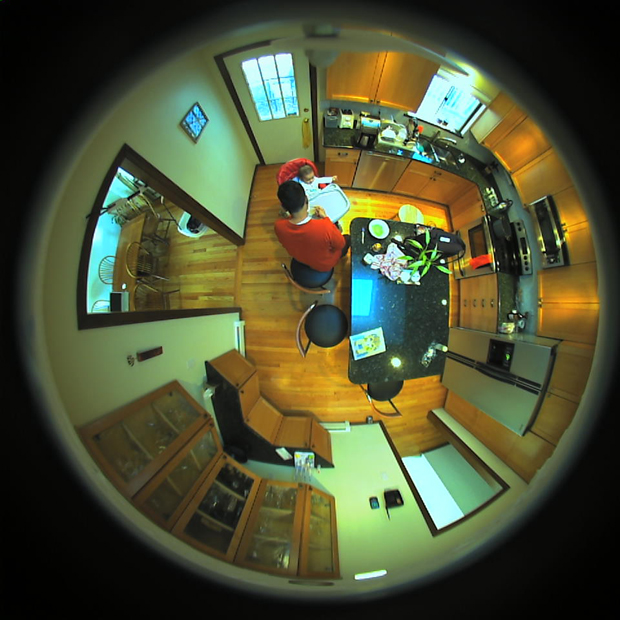MIT Scientist Captures Son's First 90,000 Hours and First Words on Video, Graphs It
BY Anya Kamenetz
In a talk soon to grab several million views on TED.com, cognitive scientist Deb Roy Wednesday shared a remarkable experiment that hearkens back to an earlier era of science using brand-new technology. From the day he and his wife brought their son home five years ago, the family's every movement and word was captured and tracked with a series of fisheye lenses in every room in their house. The purpose was to understand how we learn language, in context, through the words we hear.
A combination of new software and human transcription called Blitzscribe allowed them to parse 200 terabytes of data to capture the emergence and refinement of specific words in Roy’s son’s vocabulary. (Luckily, the boy was an early talker.) In one 40-second clip, you can hear how “gaga” turned into “water” over the course of six months. In a video clip, below, you can hear and watch the evolution of "ball."
Unreal 3-D visualizations allowed his team to zoom through the house like a dollhouse and map the utterance of each word in its context.
In a landscape-like image with peaks and valleys, you can see that the word “water” was uttered most often in the kitchen, while “bye” took place at the door.
The video was processed to show "time worms," below, charting the family's movement from room to room.

Most moving of all was the precise mapping of tight feedback loops between the child and his caregivers—father, mother, nanny. For example, Roy was able to track the length of every sentence spoken to the child in which a particular word--like “water”--was included. Right around the time the child started to say the word, what Roy calls the “word birth,” something remarkable happened.
“Caregiver speech dipped to a minimum and slowly ascended back out in complexity.” In other words, when mom and dad and nanny first hear a child speaking a word, they unconsciously stress it by repeating it back to him all by itself or in very short sentences. Then as he gets the word, the sentences lengthen again. The infant shapes the caregivers’ behavior, the better to learn.
Roy is now taking the amazing research capability and team he’s developed and applying it to commerce. He’s on leave from MIT and has founded a VC-backed company called Bluefin Labs that applies these same high-powered analytics to relate, not the speech of a child to that of a father, but events broadcast on TV to conversations taking place in social media, the better to chart “engagement” with the State of the Union Address or Jersey Shore or a car commercial.
"After 15+ years of academia, I want to take some of my ideas out of the lab and into the world," Roy told Fast Company. "I also feel that the changes in the world of mass and social media provide a perfect environment for these ideas to have real impact (not just commercial, but also social), a opportunity that I feel compelled to seize."
The methods he's developed are still being applied to babies; some of his senior graduate students at MIT continue to analyze the data, and he's designed PlayLamp, a less intrusive recording device currently being used in pilot studies of children at-risk of autism.
Hiç yorum yok:
Yorum Gönder